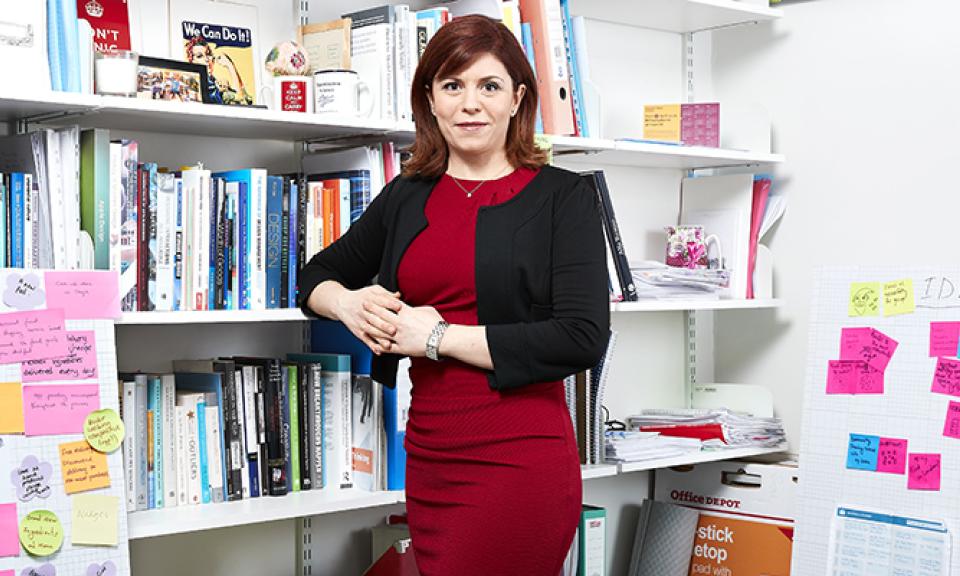
Written by
Published
Category
Key topics
Businesses need to empathise with their customers or else risk failure, says Dr Ileana Stigliani, Assistant Professor of Design and Innovation.
Over the past decade the term “design thinking” has transformed from a trendy buzzword used in the startup community, to a widely accepted concept in the wider business world. Entrepreneurs have long spoken of the need to “think outside the box” and find creative new ways to develop products and services. But what does “design thinking” actually mean and why should businesses care about it?
In the era of the Internet of Things, the pressure to keep up with the advances in technology has never been greater. Technology now allows us to communicate and collaborate beyond borders. Mobile devices such as smartphones and tablets, combined with the power of the internet, have revolutionized the way companies work. Storing information on a cloud computing system rather than on a PC has made information easily accessible anytime and anywhere.
Companies such as Apple, Uber, Netflix and Nintendo have changed the rules of a whole industry by getting the business model right first and using new technologies to achieve their business goals.
As consumers demand more sophisticated products and services, there’s no doubt that technology plays a vital role in how businesses continue to evolve in their quest for innovation. But with so much technology available at our finger tips, does this spell the end for the traditional human centred interaction between businesses and customers? This is where design thinking plays a crucial role in how companies formulate their business models.
At the heart of design thinking is the ability to empathise with the people you are designing a service or product for. As we progressively move towards a world dominated by technology, preserving products and services which are operated by humans rather than machines has never been more important. Artificial intelligence, the Internet of Things and big data have transformed our lives exponentially, but their success still depends on understanding the root causes of the behaviours of the humans behind the technology.
Big data tells us that something is happening – for instance by revealing someone’s spending habits. However, it fails to tell us why people make certain choices in the first place. In other words, big data is often decontextualised from culture, values, aspirations and motivations, which represent what drives human behaviour. Failing to understand why people behave in a certain way can lead to wrong assumptions and ill-informed decisions.
To successfully innovate, businesses need to combine analytics with qualitative data to provide deeper insight into what influences people’s behaviour. This is the key to developing innovations that resonate with people on an emotional level.
Being able to put yourself in the shoes of the customer is vital for businesses to succeed. This is the essence of design thinking. However, many products and services fail as a result of managers not consulting with or listening to the needs of their customers.
This lack of empathy with customers can lead to the egocentric empathy gap in decision-makers. This happens when businesses project their own preferences for products and services onto customers and consistently over-estimate the similarity between what they value and what the public values. As a result, these companies often fail to create products and services that give people value for money.
For example, Kodak invented digital photography and the digital camera well before it was launched onto the mainstream market. However, early prototypes of a digital camera were discarded because decision-makers inside the company assumed that what customers valued was high quality of reproduction. At the time, digital technologies provided a lower definition with fewer pixels, so overall the quality was lower.
BMW is a prime example of a company that has chosen empathy over statistics to have a deeper dialogue with its customers. The company is dedicated to designing not only cars, but the broader experience of owning a car, and what that means to individual owners. BMW’s approach is to provide experts in their showrooms who dedicate time to helping shoppers decide on their choice of vehicle.
The BMW product genius is not a salesperson. The product genius is there to explain the products and to help the customer understand the product in more detail. The product genius is not encumbered by the sale process and is not motivated to sell a car, but his motivation is customer satisfaction.
Another success story can be seen with the furniture company Herman Miller. Together with Boston-based design and innovation consulting firm Continuum Innovation, they developed a special chair for hospital patients recovering from an operation, the Nala Harmonic tilt chair.
The design team met patients and caregivers in 19 hospitals to understand what worked and didn’t work in the types of chairs offered to patients. They found that a chair needed to benefit patients both physically and psychologically. By addressing the true needs of patients, they designed a chair that helped patients recover more quickly and therefore successfully boosted hospitals’ turnover and productivity.
Design thinking has also been shown to solve social issues in the wider world. A few years ago, advertising agency Lowe SSP3 was commissioned for a project by the Colombian Government aimed at demobilising guerrilla fighters. By using design thinking and in particular the use of in-depth interviews with former guerrillas, the agency gained an interesting insight. They found that what guerrillas valued most but lacked when they were in the jungle was their families. By empathising with the guerrillas, the team realised that in a Catholic country such as Colombia, the significance of Christmas was valued by everyone and this was a time when the guerrillas would feel most emotionally vulnerable.
This led to the launch of Operation Christmas, which involved installing nine, 75-foot trees near guerilla strongholds and decorating them with Christmas lights. Each tree was equipped with a motion detector that lit up the tree and a banner when the guerrillas walked by at night, which read: “If Christmas can come to the jungle, you can come home. Demobilise. At Christmas, everything is possible.” As a result, five percent of guerrilla fighters gave up and demobilised.
To survive and succeed in today’s complex world, businesses need to generate products and services that improve the lives of their customers. Being able to see the world through their customers’ eyes and hearts is the secret to success.

